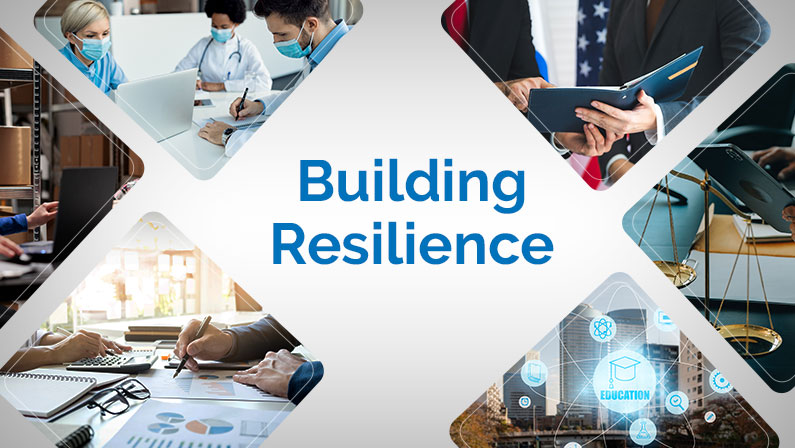Let’s explore how this applies specifically to the highest targeted industries:
1. Healthcare Resilience: Safeguarding Lives and Data
The healthcare sector remains the most frequently targeted industry, with average breach costs soaring to $10.93 million. Hospitals and healthcare providers are especially vulnerable due to their reliance on electronic health records (EHR) and patient care systems.
- Building Resilience: Start with a Business Impact Analysis (BIA) to understand critical operations, such as patient data management and treatment protocols. Incorporating redundancy in EHR systems ensures that even during a disruption, patient care continues uninterrupted. Further, AI-driven anomaly detection can help spot irregularities in real time, reducing the likelihood of a ransomware attack impacting hospital functions.
- Real-World Example: A healthcare organization that implemented redundant EHRs and regular backups was able to recover quickly from a ransomware attack that targeted its data servers, avoiding significant operational downtime.
2. Financial Services Resilience: Protecting Trust and Transactions
Financial services rank high in terms of both attack frequency and cost, with breaches averaging nearly $5.9 million. Financial institutions must prioritize resilience to safeguard both monetary assets and customer trust.
- Building Resilience: Focus on strengthening the alignment between business operations and technology. For instance, real-time fraud detection systems must be integrated seamlessly with transaction processing platforms. Financial firms should also implement multi-layered security and redundancy for transaction data, ensuring continuity even when primary systems are compromised.
- Practical Tip: Conduct regular Incident Response (IR) drills that simulate data breaches or phishing attacks targeting customer accounts. These exercises build operational resilience and ensure that all employees—from front-line tellers to C-level executives—are prepared to act swiftly.
3. Retail Resilience: Streamlining Security for Continuous Sales
Retailers, especially those operating online, face increasing threats from e-skimming and point-of-sale (POS) intrusions, which can cripple businesses during critical sales periods like the holidays.
- Building Resilience: Ensure data redundancy across all sales channels. Implement real-time security monitoring that can automatically quarantine suspicious activity before it affects payment processing. Automating these processes builds resilience by reducing human error and ensuring continuous sales.
- Practical Tip: Automate Inventory and Transaction Monitoring. Retailers should integrate automated systems that continuously monitor inventory levels, sales transactions, and POS activity for any anomalies. By using AI-driven solutions, retailers can detect suspicious behavior—such as unusual bulk purchases, inconsistent stock levels, or unexpected access to POS systems—and take immediate action to secure their systems before a breach occurs. This automation reduces reliance on manual oversight and significantly decreases response time during a potential attack.
3. Government Resilience: Defending Critical Infrastructure
Government organizations are prime targets for ransomware and espionage, particularly due to the sensitive nature of the data they hold. The public sector must focus on ensuring that critical infrastructure continues to function, even during a breach.
- Building Resilience: Leverage multi-factor authentication (MFA) and encryption protocols to protect sensitive government data. Government agencies should regularly review third-party vulnerabilities, ensuring that contractors and suppliers are adhering to the same resilience protocols. Furthermore, cross-training employees ensures that key functions can continue even if critical personnel are unavailable.
- Pro Tip: Governments should adopt zero-trust architectures, ensuring that no one—inside or outside the network—is inherently trusted.
5. Education Resilience: Ensuring Continuous Learning
Schools and universities are increasingly being targeted for their rich personal data troves and reliance on online learning platforms. As a result, the education sector must build resilience to maintain both learning continuity and data security
- Building Resilience: Start with a BIA to identify critical learning systems and data repositories. Schools should establish redundant communication channels and backup plans for online learning platforms, ensuring that classes can continue even during a disruption. Additionally, staff and student cybersecurity training is essential to reduce risks posed by phishing and malware.
6. Legal Sector Resilience: Safeguarding Confidentiality
Law firms manage vast amounts of sensitive information, from intellectual property to high-stakes legal strategies, making them increasingly attractive to attackers. Legal industry breaches can lead to disastrous financial and reputational losses.
- Building Resilience: Implement strong access controls for all client files, ensuring that only authorized personnel have access. Regularly updating and testing Incident Response (IR) plans ensures that law firms can respond quickly and decisively to breaches without jeopardizing client confidentiality. Regular data backups and redundancy of sensitive files also ensure that legal work can continue uninterrupted.
- Practical Tip: Implement Role-Based Access and Data Encryption. Law firms should enforce role-based access controls (RBAC), ensuring that only authorized individuals have access to specific client data or case files based on their role. In addition, all sensitive legal documents should be encrypted, both at rest and during transmission. By limiting who can access what and ensuring that even if data is intercepted it cannot be easily read, firms add critical layers of protection to their most valuable assets. Regular audits of access logs can also help identify any unusual activity early.
Building a Resilience-First Strategy
Resilience isn’t just about cybersecurity—it’s about maintaining business continuity and operational integrity no matter what threats arise. Whether it’s healthcare, finance, retail, government, education, or legal, every sector faces its own unique risks, but the core principles of building resilience remain the same: align business and technology, anticipate disruptions, and implement layered protection.
By embedding resilience into business strategy, organizations not only protect their bottom line but also strengthen their reputation and ensure long-term sustainability in an increasingly interconnected world.
If you want to get started, get your complimentary resilience assessment!





